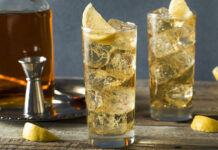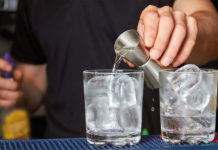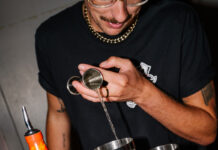From low and no to craft beer, taps and fridges should be kept busy

BEERS that are low in ABV but high in quality are expected to be particularly popular in the on-trade this year, as consumers look to moderate their alcohol intake but continue to socialise.
With health staying high on the agenda in 2020, brewers have predicted that the growth in low and no-ABV beers will continue throughout the year, with the message consistent from craft brewers and international companies.
Jerry Shedden, category and trade marketing director at Heineken UK, said the public is “increasingly concerned about their health and wellbeing”.
“With 50% of people now moderating their alcohol intake, and 67% proactively trying to lead a healthy lifestyle, low and no options are in demand and crucial to any range,” said Shedden.
Giselle Dye, director at Bellfield Brewery, the gluten-free brewery in Edinburgh, agreed that no and low-alcohol beer is likely to be one of the popular choices for pub customers this year, along with collaborative brews and sour beers.
Fi Leonard, customer marketing manager at Tennent’s, which has just launched Tennent’s Light – a low-calorie, gluten-free 3.5% ABV lager – in draught and bottled formats, said low and no-alcohol beer has become a category in its own right.
“Driven by consumers and the demand for greater choice on lower-ABV and lower-calorie beers, the popularity of ‘low and no’ beers is now an established and growing category,” said Leonard.
“Tennent’s Light is aimed at beer drinkers who are looking for a great-tasting refreshing beer with lower ABV and lower calories. At 114 calories per pint (66 calories per bottle), it’s the lowest calorie beer available.”
Fortunately, cutting down on alcohol doesn’t necessarily mean cutting down on trips to the pub, according to Sharon Palmer, head of trade marketing at Budweiser Brewing Group UK & Ireland.
In fact, quoting figures from CGA, Palmer said 43% of consumers who are moderating their alcohol intake are still drinking in pubs, bars and restaurants every week, compared to a country-wide average of 32%.
“So it’s a real opportunity for pubs and bars to tap into the increasing demand for low alcoholic options in social drinking settings,” said Palmer.
Even as the beer market shifts, however, some things are unlikely to change, such as the supremacy of draught beer in the on-trade.
Leonard at Tennent’s said: “Draught has been performing well in the on-trade and remains a favourite for consumers, making up over 60% of beer sales in Scotland.
“Therefore, operators must ensure they carefully review their draught options to maximise sales.”
Here, too, there could be an opportunity for low and no products.
Palmer at Budweiser said: “If a particular brand is selling really well in bottle format, why not ask regular customers whether they would like to see it on draught as well?
“Additionally, ensure you are taking note of how many varieties of pumps you have on the bar. Are they lager and if so, why not add a low alcohol or craft beer pump to cater to a wider clientele?”
Outside of low and no, the craft beer boom is likely to continue throughout 2020, and Sarah Stirton of Stewart Brewing in Edinburgh predicted hazy IPAs, in particular, could be a hit with customers.
“In 2020 I wouldn’t be surprised to see the ‘Haze Craze’ (as it’s been dubbed) continue to grow with people moving away from more traditional IPAs,” said Stirton.
“Sour beer shone last summer but Hazy IPA could be positioned to overtake the beer gardens this year.”
Whether stocking low or no, craft or mainstream, lager or IPA, the emphasis should be on quality, according to Stephen Kofler, sales and marketing director at Krombacher.
“For the majority, draught is the go-to option so it’s vital operators give the beer, the lines and equipment the respect and love it deserves,” said Kofler. “The correct glassware and the perfect serve is also required if you want consumers to pay a little more for a premium product.”



















